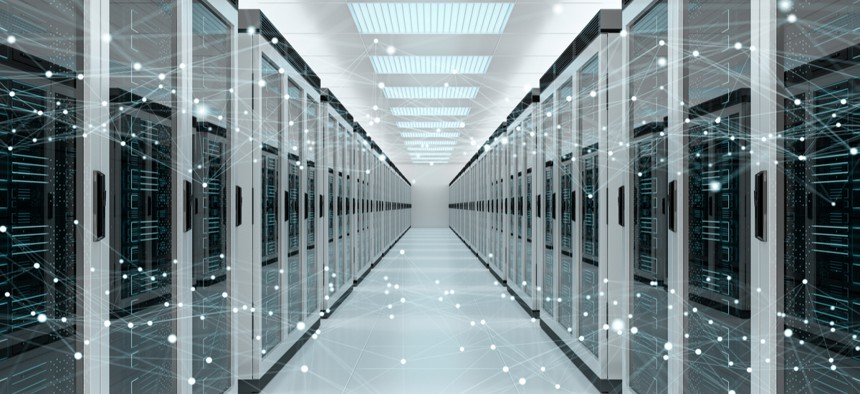Rethinking Data Center Optimization with a Service Mentality

sdecoret/Shutterestock.com
These updates can make a real impact if agencies take the right steps.
In November, the White House Office of Management and Budget proposed updating the Data Center Optimization Initiative metrics to prioritize data center consolidation over alternate optimization methods. This most recent set of policy revisions emphasize a clear goal across government to focus on operating models like cloud.
Many aspects of this recent update focus on using existing data centers more efficiently and setting agencies up for long-term change. Agencies must prioritize virtualization, ensure data portability and report the number of servers in a given data center to provide transparency into server utilization.
Changing metrics may seem like a moving target. Even the Government Accountability Office recently spoke up about concerns, noting that DCOI updates might throw off agency progress and mask already achieved efficiencies. However, these updates can make a real impact if agencies take the right steps. By using DCOI updates as a basis for driving critical conversations and encouraging an adaptable service mentality across teams, new metrics can be tools for improvement.
One of the first ways agencies can use DCOI updates to improve IT operations is by stimulating the right conversations among federal IT leadership teams. This means thinking about the agency’s mission and how IT infrastructure and the priorities outlined in the updates can support missions as they advance.
DCOI will stimulate conversations on virtualization, server utilization and overall data center effectiveness, but these should all be in the context of how they will better support the warfighter and allow citizens access to the resources they need. Further, it’s not enough to consider the impact of these considerations today. CIOs and IT leadership should be planning for tomorrow, next quarter, next year and beyond, as advances in internet of things and artificial intelligence drive increased demands on IT infrastructure.
Critical conversations don’t need to focus solely on the Federal Information Technology Acquisition Reform Act scorecards, which still show agencies struggling to meet data center goals. The scorecards and DCOI aren’t meant to be punitive. Their goals are to stimulate discussion about budgeting, long-term digitization and achieving maximum adaptability that may not be taking place already.
Once these conversations have started, agencies should use the new metrics to better support a service mentality across government. Adaptability is not a choice, it’s a requirement in both an agency’s mindset and IT infrastructure. This service mentality means making every decision with the mission and workload in mind.
When it comes to a service mentality in an agency’s IT infrastructure, DCOI updates firmly direct agencies toward increased virtualization and thoughtful cloud migration. While this doesn’t mean no new data centers will be built, it will force agencies to think about the environment in which they’re placing their data and if it’s the most effective for their missions, workloads and budget. Does the agency handle sensitive national security information that could impact the safety of troops overseas, or are they looking for an environment to store publicly available information intended to be made widely available?
Multi-cloud environments will provide agencies with the flexibility to accommodate all scenarios and allow IT infrastructure to act as a mission enabler. The right technologies in the data center are also crucial to progress—this means automating wherever and whenever possible. Agencies shouldn’t advance blindly into the cloud, as the cloud in itself isn’t a destination. But they should consider multi-cloud environments and approaches like edge and fog computing that might be a perfect fit for an agency’s unique challenge. Virtualization, if approached with the mission in mind, can enable flexibility in the face of unpredictable changes and needs.
Lasting transformation is not easy to achieve. It’s the initial conversations, service mentality and willingness to adapt that make these long-term IT modernization achievements possible. To make the DCOI effective and improve FITARA scores agencies can start with two elements: a critical dialogue about how to modernize, and a service mentality that drives the right approach to virtualization.
Cameron Chehreh is Dell EMC Federal's chief technology officer and vice president of Presales Engineering.
NEXT STORY: Technology Legislation Slowly Crawling Forward


